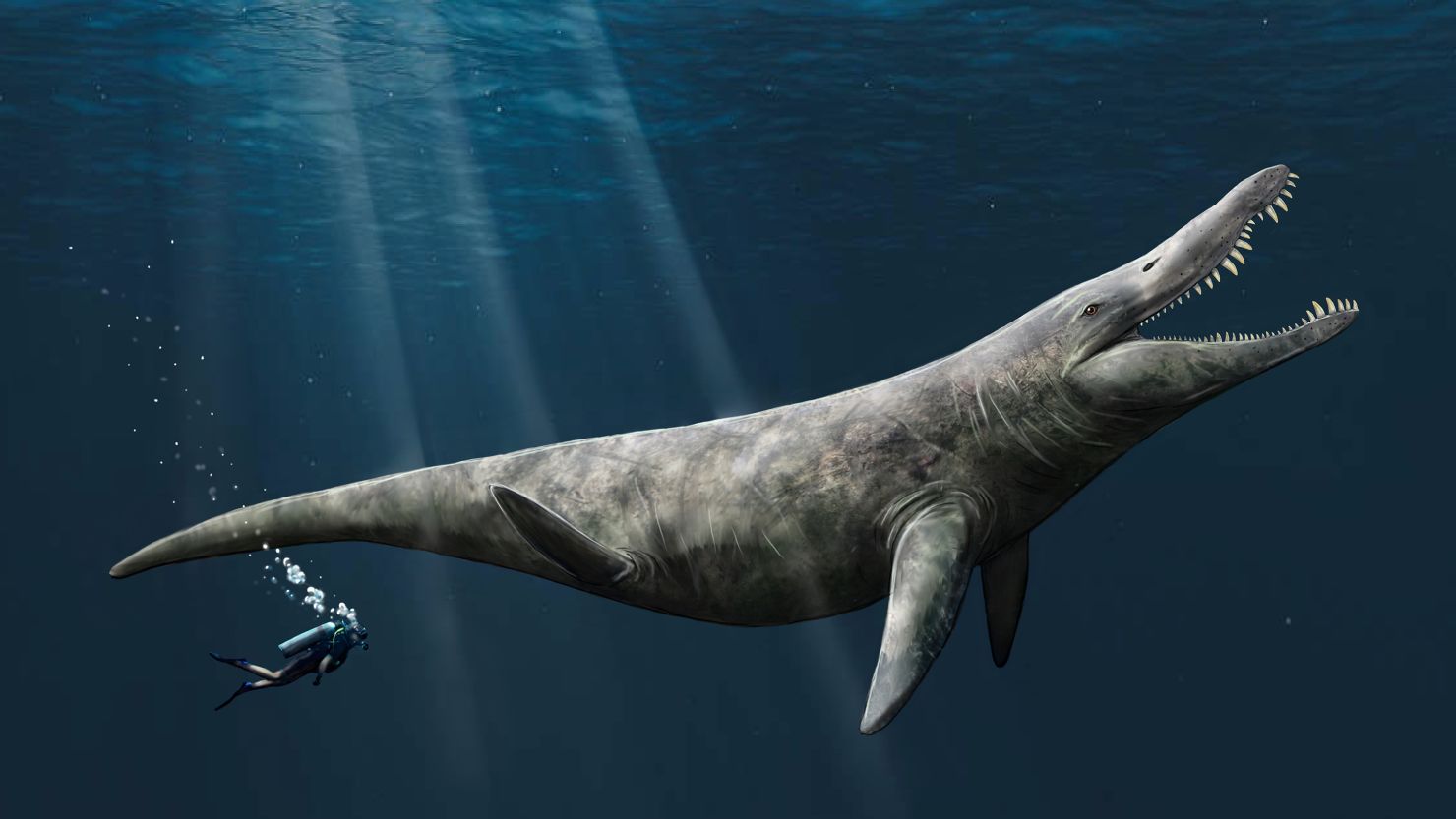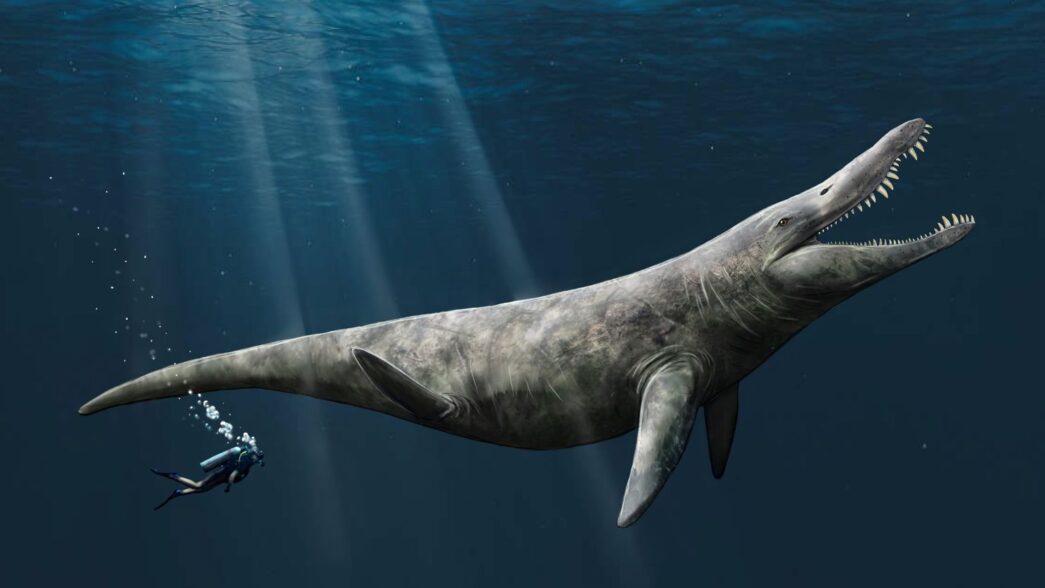During a beachcombing adventure in Somerset, England, a British girl and her father stumbled upon a fossilized jawbone that has unveiled a remarkable discovery. The bone, identified as a surangular, belonged to a massive marine reptile known as an ichthyosaur, dating back to 202 million years ago. Named Ichthyotitan severnensis, this creature, estimated to be between 72 and 85 feet (22-26 meters) in length, likely ranks among the largest animals to have ever roamed the Earth.
Researchers revealed that the Triassic-era Ichthyotitan’s jawbone was found by Ruby Reynolds and her father Justin Reynolds in 2020 at Blue Anchor, Somerset. This jawbone, along with another discovered in 2016 along the Somerset coast at Lilstock, shed light on the existence of this colossal marine reptile.
The awe-inspiring magnitude of Ichthyotitan’s size, comparable to that of modern-day baleen whales, provides a glimpse into the prehistoric world where marine reptiles reigned supreme alongside terrestrial dinosaurs. Ichthyosaurs, such as Ichthyotitan, thrived in Earth’s oceans for approximately 160 million years before disappearing around 90 million years ago.
Ruby Reynolds, now 15, and her father Justin, played a pivotal role in this groundbreaking discovery, drawing comparisons to the renowned 19th-century fossil hunter Mary Anning. Their find has not only contributed to scientific knowledge but also underscored the importance of citizen science in paleontology.
The discovery of Ichthyotitan illuminates the fascinating diversity of life that once inhabited our planet’s oceans and underscores the fragile yet resilient fabric of life on Earth. As researchers continue to unravel the mysteries of prehistoric creatures like Ichthyotitan, each new revelation provides invaluable insights into our planet’s rich natural history.
















